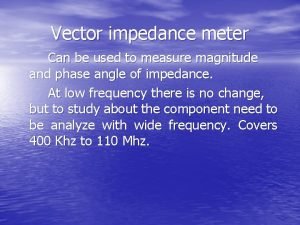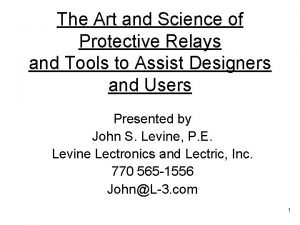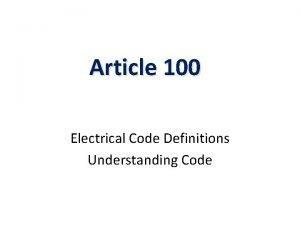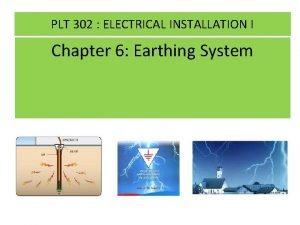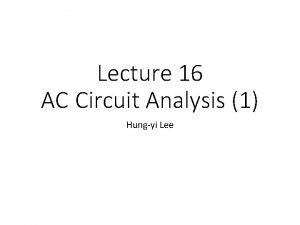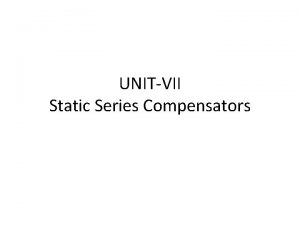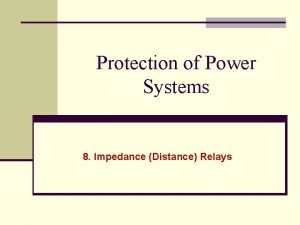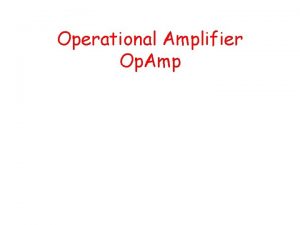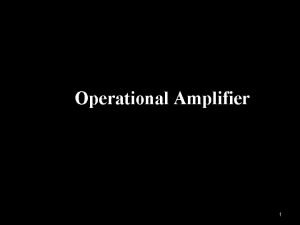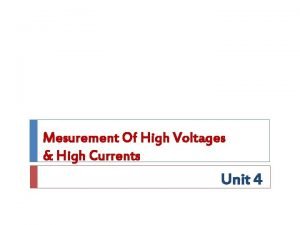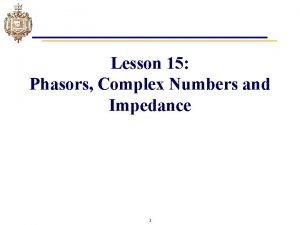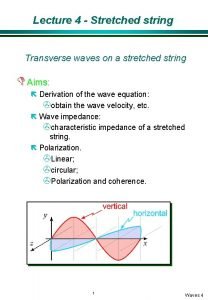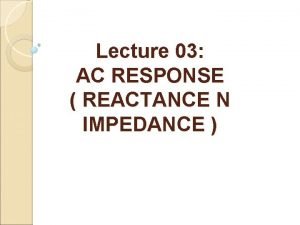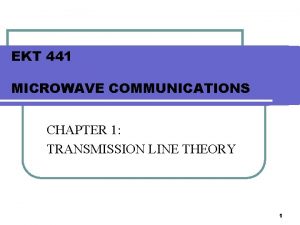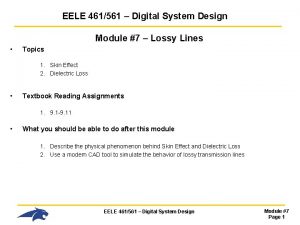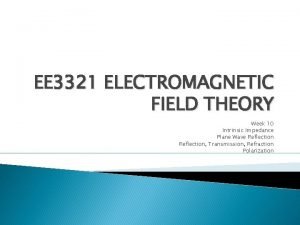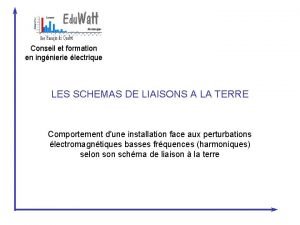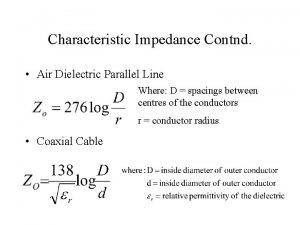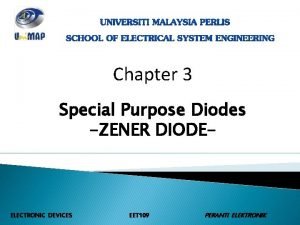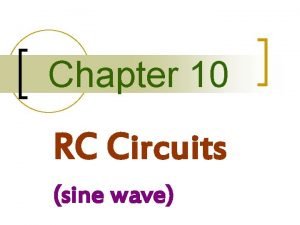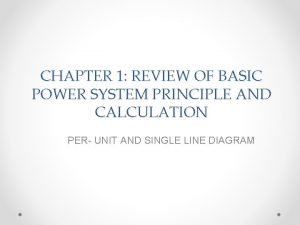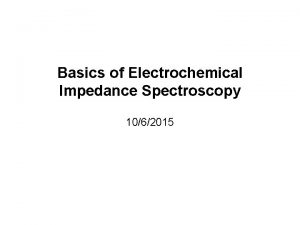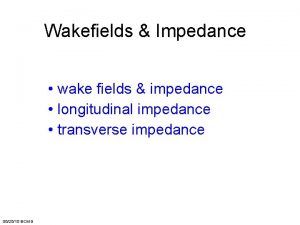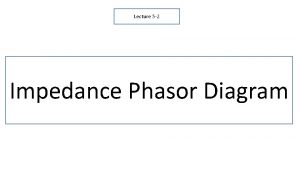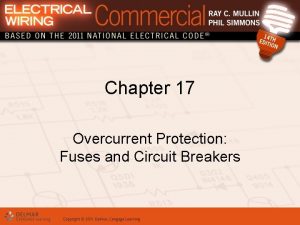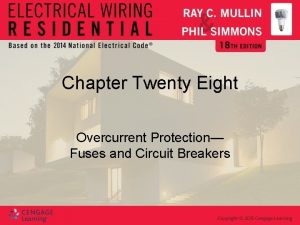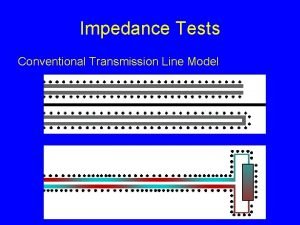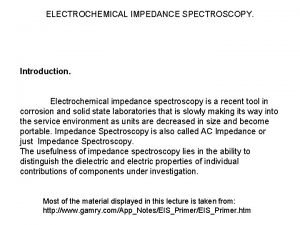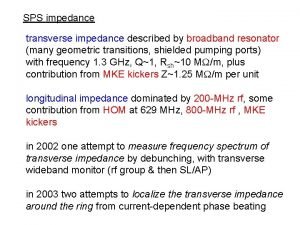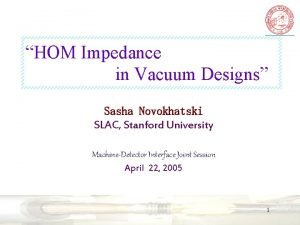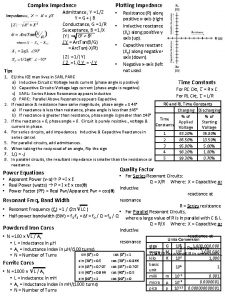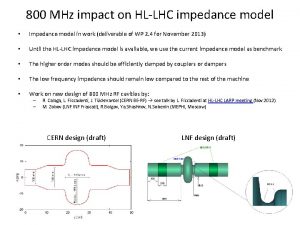HIGH IMPEDANCE PRINCIPLE A simple overcurrent and earth



























- Slides: 27

HIGH IMPEDANCE PRINCIPLE • A simple overcurrent and earth fault relay will not provide adequate protection for winding earth faults. • Even with a biased differential relay installed, the biasing desensitizes the relay such that it is not effective for certain earth faults within the winding. This is especially so if the transformer is resistance or impedance earthed, where the current available on an internal fault is disproportionately low. • In these circumstances, it is often necessary to add some form of separate earth fault protection.

HIGH IMPEDANCE PRINCIPLE Figure 10. 1

HIGH IMPEDANCE PRINCIPLE It can be seen from Figure 10. 1 that during an external fault the through fault current should circulate between the current transformer secondary’s. The only current that can flow through the relay circuit is that due to any difference in the current transformer outputs for the same primary current. Magnetic saturation will reduce the output of a current transformer and the most extreme case for stability will be if one current transformer is completely saturated and the other unaffected.

HIGH IMPEDANCE PRINCIPLE The stability of a current balance scheme using high-impedance relay depends upon the relay voltage setting being greater than the maximum voltage which can appear across the relay for a given through-fault condition. Stability Voltage This maximum voltage can be determined by means of a simple calculation, which makes the following assumptions: • One current transformer is fully saturated, making its excitation impedance negligible. • The resistance of the secondary winding of the saturated CT together with lead resistance constitute the only burden in parallel with the relay. • The remaining CTs maintain their ratio.

Stability Voltage To achieve stability for external faults, the stability voltage for the protection (VS) must be determined in accordance with equation [1]. VS ≥ K I F(RCT+2 RL) …………………………. (1) Where If = maximum through fault current Rct +2 RL= The highest loop resistance from relaying point; K = Relay characteristics constant For stability, the voltage setting of the relay must be made equal to or exceed the highest value of Vs calculated above.

Figure 10. 2 To obtain high speed operation for internal faults, the knee point voltage, VK, of the CTs must be significantly higher than the stability voltage, VS. This is essential so that the operating current through the relay is a sufficient multiple of the applied current setting.

HIGH IMPEDANCE PRINCIPLE • Use of stabilising resistor: – Where relay impedance alone is too low to ensure stability then the relay circuit impedance can be increased through the addition of an external resistor connected in series with the relay - Required circuit impedance > Vs/Is - Rstability> (Vs/Is) -Rrelay Usually Rrelay very small and neglected.

HIGH IMPEDANCE PRINCIPLE • Current transformer knee point requirements: – Current transformers must have sufficient output to ensure fast operation of relay during internal fault conditions – Required Vk > 4 Vs (typically -depends on actual relay type)

HIGH IMPEDANCE PRINCIPLE • Required current setting and CT magnetising current - to achieve the required primary operating current a suitable setting (Is) must be chosen for the relay. - The recommended primary operating current for REF protection is usually determined by the minimum fault current available for operation.

HIGH IMPEDANCE PRINCIPLE The primary operating current (Ip), in secondary terms, is a function of the CT ratio, the relay operating current (Is), the number of CT. s in parallel with the relay element (n), and the magnetising current of each CT (Ie) at the stability voltage (Vs). The required relay current setting (Is) can be determined by equation (4).

HIGH IMPEDANCE PRINCIPLE Metrosil Requirement • During internal faults the high impedance relay circuit constitutes an excessive burden to the CT’s. • A very high voltage develops across the relay circuit and the CT’s which can damage the insulation of CT’s, secondary wiring and relay. • Magnitude of peak voltage VP is given by an approximate formula (based on experimental results) • VP= 2 √ 2 VK(VF-VK) • Where VF= If (RCT + 2 RL+ RSTAB+ Rrelay) – Metrosil required if VP> 3 k. V

Restricted Earth Fault Procedure

Application of High Impedance Principles Example:

Application of High Impedance Principles Example: Where Rct = 3. 70, Vk = 91 volts, Rstab = 0 - 220Ω Max lead length = 50 m, Rl = 0. 057 (1. 14/km); Vknee CT = 91 V Required primary operating current = 25% of earth fault - Select suitable Vk/Vs ratio and K Factor. From graph at Vk/Vs = 4; K factor = 0. 5 − Calculate stability voltage, Vs. Vs = K. If (Rct + 2 RI) Vs = 0. 5 x 8. 75 (3. 70 + 2 x 0. 057) = 16. 7 volts

Application of High Impedance Principles - Calculate and check Vk requirements. Vk = 4 Vs = 66. 8 volts Actual Vk = 91 V which results Vk/Vs ratio = 5. 5 It can be seen from Figure 10. 2, with a factor of 0. 5 the protection would be unstable. For Vk/Vs = 5. 5, k factor for stability = 0. 6; Re-calculated Vs Vs = 0. 60 x 8. 75 (3. 70 + 2 x 0. 114) = 20. 0 volts Vk = 4 Vs = 80. 0 volts

Application of High Impedance Principles -Calculate and check Vk requirements (cont-) Actual Vk = 91 volts, which results in a Vk/Vs ratio = 4. 55 and, as can be seen from Figure 16, with a K Factor of 0. 6 the protection is stable. − Calculate relay setting, Is. Required primary operating current = 25% of earth fault current = 6350 V/6. 3 x 25% = 252 Amps. -Setting current, Is = (Iop/CT ratio) - n Ie

Calculate Relay Setting (Is) From magnetizing graph; Ie = 1. 1 m. A Is = (252 x 1/600) - 4 x 0. 0011 = 0. 42 A(select this setting on the relay)

− Calculate required stabilising resistance value, Rs Rst = Vs / Is = 20 / 0. 42 = 47. 62 ohm − Check Metrosil requirements If the peak voltage appearing across the relay circuit under maximum internal fault conditions exceeds 3000 V peak then a suitable non-linear resistor (. metrosil. ), externally mounted, should be connected across the relay and stabilising resistor. The peak voltage can be estimated by the formula: Where

− Check Metrosil requirements (cont)

Testing and Commissioning of Differential Relay a)Bias Differential Relay Objectives: i) To ensure the relay is operate when there is in zone fault at HV and LV side of autotransformer. ii) To ensure the relay is not operate during out of zone fault. Before testing started, it is requires to : 1) Check schematic diagram for transformer bias differential protection scheme current transformer (to confirm the star point for HV CT and LV CT toward transformer.

Testing and Commissioning of Differential Relay 2) Check current transformer circuit terminal block is closed. 3) Check and set the relay as per setting calculation given by TNB or per site calculation. Check the vector group ration correction setting in relay (refer TNB setting)

Bias Differential Relay Testing Primary Operation Check - Primary injection test set is used to inject current to first to CT side R, and then to Y and B until the relay operates. - Then secondary and relay operating time is measured and record. The results will then compared to the setting values. - The same procedures are then applied to the LV side

Bias Differential Relay Testing Stability test or Out of Zone Test A proper connection is prepared as in Figure 2

Bias Differential Relay Testing Stability test or Out of Zone Test (cont) A three phase 415 V supply is then injected to R, Y and B phase simultaneously with LV side is short circuited after the CT The HV, LV primary and secondary current are measured together with relay operating current. Unstable setting is detected when voltage and current exist at the relay.

Bias Differential Relay Testing In Zone Test (cont) The procedures are the same as out zone testing, except the secondary or LV side is short circuited after the CTs

CT Requirements for Percentage Bias Differential Protection

CT Requirements for Percentage Bias Differential Protection
 Vector impedance meter determine impedance in
Vector impedance meter determine impedance in The art and science of protective relaying
The art and science of protective relaying A feeder consists of all circuit conductors located
A feeder consists of all circuit conductors located Earth loop impedance
Earth loop impedance Hematology
Hematology Impedence triangle
Impedence triangle Simple past simple present simple future
Simple past simple present simple future Gto thyristor controlled series capacitor
Gto thyristor controlled series capacitor Y connected generator
Y connected generator Voltage triangle for rc series circuit
Voltage triangle for rc series circuit Impedance relay
Impedance relay Lossy medium example
Lossy medium example Input impedance of op amp
Input impedance of op amp Gain bandwidth product of op amp
Gain bandwidth product of op amp Series impedance voltmeter
Series impedance voltmeter Eli the ice man
Eli the ice man Transverse impedance of a string
Transverse impedance of a string What is total impedance
What is total impedance Ent 163
Ent 163 Attenuation constant formula
Attenuation constant formula Characteristic impedance definition
Characteristic impedance definition Define intrinsic impedance
Define intrinsic impedance Couplage par impédance commune
Couplage par impédance commune Characteristic impedance of air
Characteristic impedance of air Zener vs normal diode
Zener vs normal diode Sinusoidal response of rc circuit
Sinusoidal response of rc circuit Per unit equations
Per unit equations Electrochemical impedance spectroscopy basics
Electrochemical impedance spectroscopy basics
